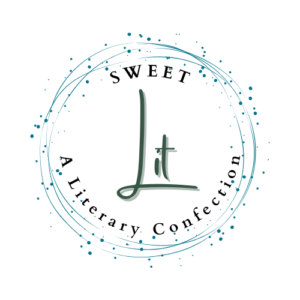A Listener
He showed up for the first time on the second Friday of November, a fair to cloudy day that reached 60 degrees. None of the park’s visitors remembered ever seeing one here at our pond. One called him “an odd bird.” Some recognized him as a cormorant. A birder called him a double-crested based on his size, hooked beak, orange facial features, and aquamarine eyes.
To account for their surprise, many said they thought of cormorants as sea birds who dive underwater to steal from fishermen and spend half their days flaring their feathers to dry them off. I’ve heard that when shad are running in the Potomac, cormorants descend in droves to claim their share. Our pond is 100 miles from the sea and offers meagre fishing.
Known for nesting in colonies near fishable salty waters, cormorants sometimes fly far for a day’s fishing. Our cormorant is traveling solo and appears to have taken up residence at water’s edge. It’s doubtful he has a nest nearby. Perhaps he’s a juvenile who hasn’t begun breeding, isn’t tied to a colony yet, and has lost his way while migrating. Or maybe he’s outlived his breeding years and is no longer tied down by the breeding cycle.
A boy about 12 went down the steps to inspect the cormorant. When the cormorant didn’t budge, the boy sat nearby. He found it oddly satisfying to sit in the bird’s presence without the bird showing fear. Five minutes later, the boy’s father arrived, “Here you are.” When the boy didn’t say anything, his father respected the shared silence and joined them.
As children learned about the new visitor, they wanted to visit the park with their parents to go down to water’s edge to spend quiet time with the bird. For days, it seemed the bird was always there. Seeing him, children ran down the steps and stood, sat, or squatted a respectful distance away. By the time parents caught up, children and the bird had already established their connection. Usually, parents surrendered to it too. Children often spoke to the bird, sometimes at great length. The bird listened attentively but said nothing in reply. He seemed equally happy if people spoke or stayed silent. If people were already down with the bird, others waited up the steps for their turn. People said they felt happy after spending time with the bird.
Drawn to the bird’s celebrity status, some people wanted their picture taken with him. And some photographers took pictures of the bird from all angles. Still, he tolerated us. Some people thought the bird sometimes looked withdrawn. They weren’t sure whether he was tired, resting, or depressed. They began wondering, how is it that we never see this bird diving for his lunch and drying his feathers in the sun? They wondered whether he was starving, lonely, sick, lost. Knowing any of these could be true, they wanted to help, but all they knew how to do was keep him company. Eventually, he always snapped out of it and became attentive again.
From time to time, children arrived at the top of the steps and, just as they were about to run down to the bird, they saw he wasn’t there. The look on their faces reflected loss, abandonment, shock, disappointment. Has he left us forever? Why did he go? When will he be back? And then he returned, after all, though sometimes after the disappointed children left.
One of the times he wasn’t there, I was among his disappointed regulars. My hope was that he too was recovering. Low to the water, he began flying laps to the far end of the pond and back. It seemed like he was testing his wings to see how fast he could fly. I didn’t quite capture his image in flight but caught his reflection in the water. The almost ghostly image doesn’t do justice to his size, three feet long, with a wing span of four and a half feet. He won’t be around long, I told myself. He’s been healing himself as he’s been healing us.
I got my quiet time with him too and watched other adults do the same. Like other photographers, I took pictures of him, knowing he wasn’t like other cormorants.
I often thought when he wasn’t there, or I saw him flying, that I wouldn’t ever see him again. One of those days, as I arrived, he was perched up on the rock from which he liked to take off. He lowered his head below the level of his body, flapped his wings fast a few times, seemingly called it off, took a look around, returned to his take-off posture, flapped a few more times, and was aloft. A little girl who had been coming to sit with him watched his take-off from the top of the steps and then ran down them to water’s edge. She didn’t shed a tear. All I saw in her was awe.
Our double-crested cormorant never returned. He had arrived on the second Friday of November and left on the fourth, when the temperature again reached the low 60s. Ironically, a day or two after he flew off, park personnel installed a sign blocking access to the steps leading to the place where children and adults alike had enjoyed being in the bird’s presence. The sign said, “Do not disturb wildlife.” By blocking the steps, the sign implied that we had been disturbing our cormorant. It is hard to imagine that anyone could believe that, considering how much the cormorant had given us.












Lovely article and wonderful photos. I felt the cormorant’s healing energy from your words. His work continues. Thank you.
Great story Jim!
I’d never seen a cormorant before. You see so much more than I do when I visit this park! (You know where and when to look…Great sensitivity to nature…)
One question: You refer to it as a “he.” In contrast, what would a female look like?
I love your writing and your photography!!!
Rog
Jim – Your cormorant piece is equal parts mesmerizing, haunting, thought-provoking, and awe-inspiring. For so many to have connected to one bird and then to have to grapple with the bird’s unknown destiny really sticks with me. I often struggle with the urge to connect with wildlife and in equal parts not to affect their behavior. From what you describe, it seems like folks were respectful and didn’t attempt to impede on the bird’s natural behaviors by feeding or chasing him.